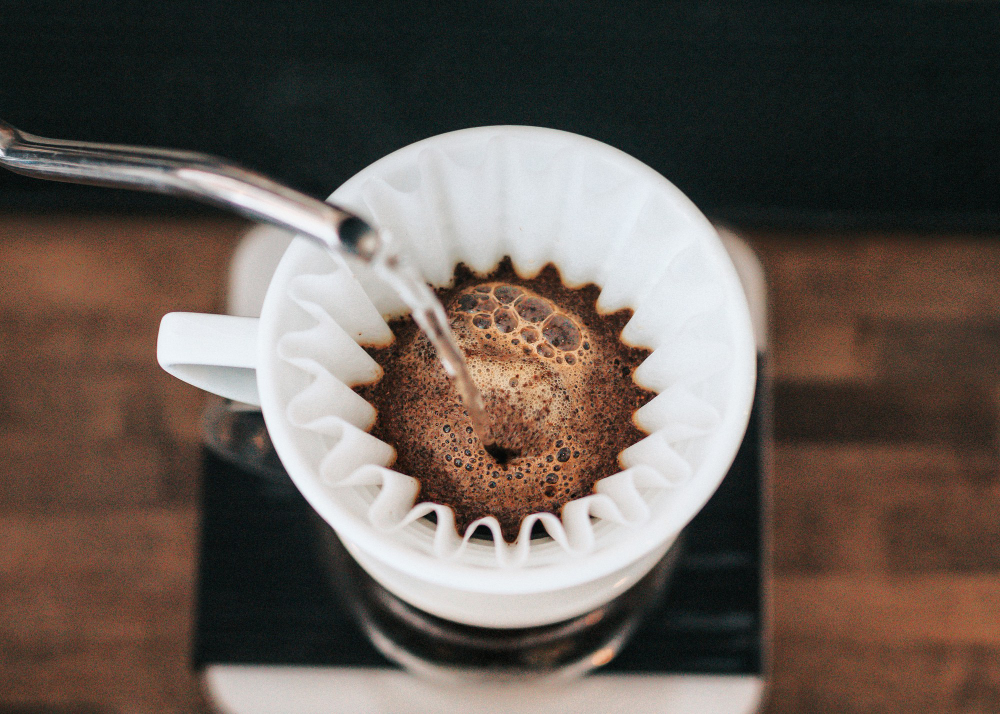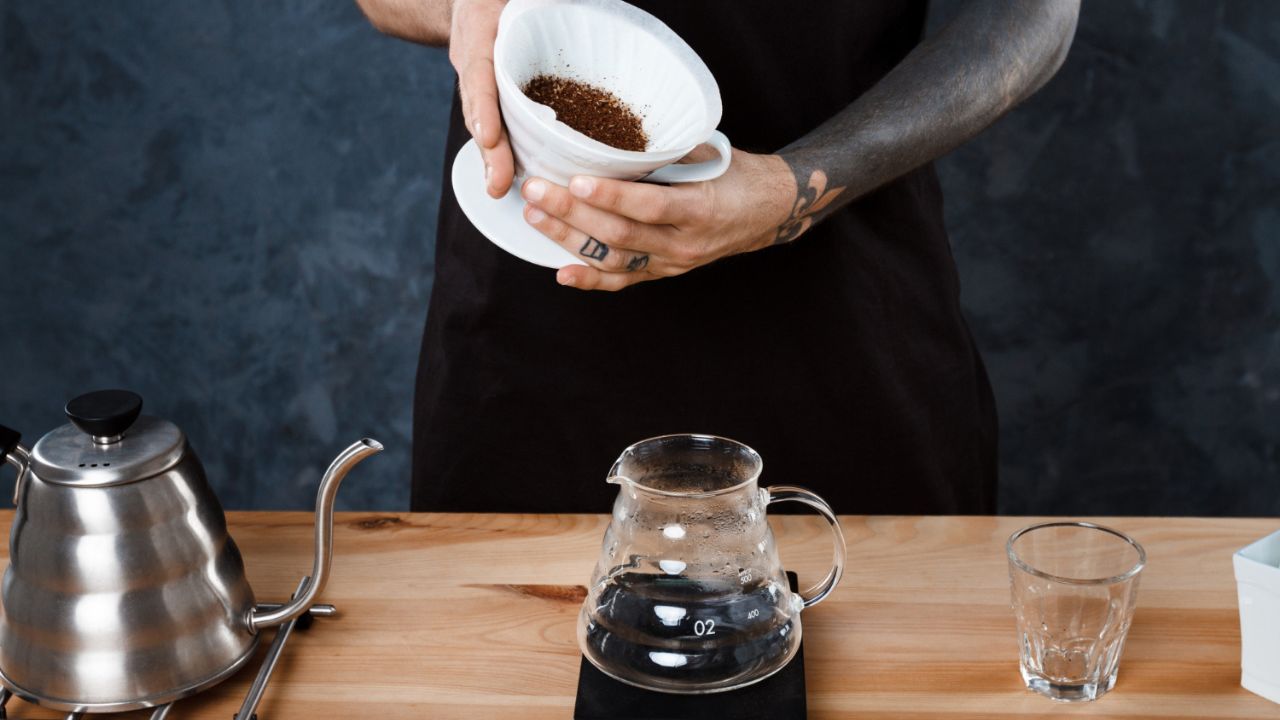Great coffee is not luck. It is repeatable. The secret is a simple weight based guideline called the golden ratio. Start with one gram of coffee for every 16 to 18 grams of water, then fine tune by grind and time. Once you learn this baseline, you can make any brew method taste brighter, sweeter, and more consistent.
This guide keeps things practical. You will learn what the ratio means, which tools matter, the exact steps to brew, and how to fix common issues without buying expensive gear.
What the golden ratio really means
The golden ratio controls strength. Think 1:16 to 1:18, coffee to water by weight. Many pros lean toward 1:17 or 1:18 for balance. Extraction is separate. It describes how much of the coffee’s soluble material you actually pull out. When strength and extraction are both in the right zone, your cup tastes full, not bitter, and sweet, not sour.
A quick example helps. Use 20 grams of coffee with 340 to 360 grams of water. That will land you in the classic range. If it tastes thin, move toward 1:16. If it tastes too intense or bitter, move toward 1:18 or coarsen the grind. Small changes make noticeable differences, so change one variable at a time.
Water temperature matters too. Aim for 195 to 205 degrees Fahrenheit. Cooler water under extracts. Hotter water can mute delicate notes or push bitterness. Temperature, grind, and time are the levers that steer extraction while the ratio sets your strength target.
Gear and ingredients that make it work
You do not need a café setup. A few reliable tools give you pro level control at home. Start with a digital scale that reads in grams. Measuring by weight beats scoops every time. A burr grinder is next. Burrs create an even grind, which brews more predictably than blade chop. Use fresh beans within a few weeks of roasting and store them airtight, away from heat and light.
Water quality is the hidden key. If your tap water tastes good cold, it is fine to brew. If it tastes flat or harsh, try filtered water. Very hard water can dull flavor. Very soft water can taste sharp. Balanced mineral content helps dissolve the right flavors from the grounds.
Brew with the golden ratio step by step

Before any method, write down your starting ratio and grind so you can adjust with purpose. The steps below work for most pour overs and drip brewers. They also adapt to French press with small timing tweaks.
- Weigh your dose. Pick a round number like 20 grams of coffee. Multiply by 16 to 18 for total brew water. Keep a notebook or phone note with your exact numbers.
- Grind fresh. Start at a medium grind for pour over or drip. For French press, start medium coarse. If the brew runs fast and tastes sour or thin, grind a little finer next time. If it runs slow and tastes harsh, grind a bit coarser.
- Heat water. Bring water to a boil, then rest for 30 seconds, or use a kettle set between 195 and 205 degrees. Preheat your brewer and mug with a little hot water, then dump that water out.
- Bloom the coffee. Add the grounds to your filter or press. Start a timer. Pour just enough hot water to wet all the grounds, about two times the weight of the coffee dose. Let it sit 30 to 45 seconds. This bloom releases trapped gas so the rest of your water can extract evenly.
- Finish the pour. Add the remaining water in smooth circles for pour over, or let your drip machine run its cycle. For pour over, total contact time is usually two and a half to four minutes, depending on dose and filter shape. French press usually steeps about four minutes before you press and pour.
- Taste, then adjust one thing. If the cup tastes a little flat, reduce water slightly or grind a touch finer. If it tastes bitter or heavy, add a bit more water next time or grind a notch coarser. Keep the change small so you can feel the difference.
Fixing common problems
Every cup teaches you something. Use the notes below to diagnose fast.
It tastes sour or thin. That is often under extraction. Try a finer grind. Keep the same ratio and time. If it is still thin, move your ratio closer to 1:16. Make sure water is in the 195 to 205 range.
It tastes bitter or harsh. That points to over extraction or too strong a mix. Grind a notch coarser. Or keep the grind and push the ratio toward 1:18. If you are using very dark roasts, consider slightly cooler water near 195 to soften the edge.
It drains too fast. Check for too coarse a grind or a filter channel. Stir the bloom gently to wet all grounds, then pour in steady circles. If using a drip machine, level the bed with a light shake before starting.
It drains too slow. Your grind may be too fine. Open it up a notch. Also check for a clogged filter or paper that folded inward. Rinse paper filters before brewing so they seat cleanly and do not add papery flavor.
It tastes muddy in French press. Let the grounds settle for an extra 30 seconds before plunging. Do not push the plunger all the way to the bottom. Stop just above the bed and pour slowly so fines stay below the screen.
Make the ratio yours

The golden ratio is a starting line, not a cage. Different beans and roasts shine at different settings. Light roasts can benefit from a slightly stronger mix near 1:16 because they are less soluble and need more help to taste sweet. Dark roasts often taste best closer to 1:18 because their solubles release faster.
Try this simple plan to find your sweet spot. Brew three small cups at 1:16, 1:17, and 1:18 using the same grind and time. Taste them side by side. Pick a winner. On your next brew, keep that ratio and adjust the grind slightly finer or coarser to polish the flavor. Two rounds like this usually dial in a bean for your setup.
Water also shapes flavor. If your cup is consistently dull, try filtered water. If your cup is consistently sharp, try water with a bit more mineral content. Consistency is the goal. The same recipe should taste the same tomorrow.
Cold brew is a special case. Most people make a strong concentrate at a tight ratio, then dilute to drink. A simple path is to steep at 1:5 or 1:6 in the fridge for 12 to 18 hours, then strain and dilute one part concentrate with one part cold water or to taste. The golden ratio still guides you. You are just splitting it into a concentrate step and a dilution step.
Finally, learn your scale and grinder well. Weigh every brew for a week. Write down dose, water, grind setting, time, and a quick taste note. Those seven days will teach you more about your palate than a month of guessing. After that, muscle memory takes over and the routine feels easy.
Sources
- Specialty Coffee Association, Golden Cup standards for strength and extraction (accessed October 2025)
- National Coffee Association, recommended brew temperature 195 to 205 F and general home brewing guidance (accessed October 2025)
- Barista Hustle, water chemistry and extraction fundamentals overview (October 2025)
- Counter Culture Coffee, brewing ratios and beginner guides (October 2025)


